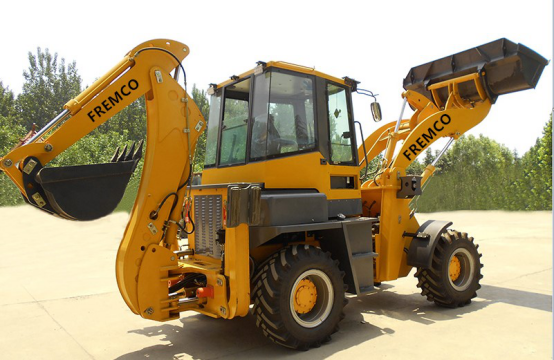Ortrander Eisenhütte, a steel foundry in Dresden, Germany, now uses an RFID system to track forklifts and containers in the plant. When the system is fully implemented, OrtranderEisenhütte will use ultra-wideband (UWB) active RFID tags to track 20-30 forklifts and passive UHF RFID tags to track 10,000 metal totes and their loads.
Ortrander casts parts for the automotive and household industries, with revenues of $30 million last year. During 2001 and 2002, the company invested heavily in expanding production, and its production doubled in 2008. In 2007, the company's management launched a project to upgrade the company's material flow, warehousing and information flow to make these processes more transparent and efficient, and to better handle high volume products.
The project includes plans to use RFID to track forklifts and totes. Ortrander signed a contract with Fraunhofer Logistics Systems Planning and Information Systems Application Center (FraunhoferALI), which helped Ortrander research the market for RFID information management systems, looking for a set of RF waves that could affect RFID systems in harsh industrial and metal environments. Working RFID system.
Ortrander eventually chose Ubisense, a provider of UWB Real Time Location System (RTLS). Ubisense's UWB tag emits a series of short signals (one hundredth of a billionth or less); the extremely short nature of the pulse wave makes the tag less susceptible to RF noise and interference from metal and other nearby objects. The reader of the RTLS system receives the tag signal through the phase-arranged antenna. The reader uses two complementary techniques to calculate the tag position: Time Difference of Arrival (TDOA) and Angle of Arrival (AOA). By adopting this technology at the same time, Ubisense claims that RTLS requires fewer readers to cover an area than a system that only uses TDOA.
Ortrander is currently selecting a manufacturer of passive UHF RFID systems, and the details of the specific technology used have not yet been decided. FraunhoferALI has developed software to link UbisenseRTLS to Ortrander's ERP system.
In early 2008, Ortrander tested Ubisense's active tags and readers, as well as EuroI.D's passive tags and other components. A month later, the company began to implement the program in the factory, focusing on the active RFID part.
The Forklift is fitted with two Ubisense tags, one on the roof and the other on the outside of the cab. The tag collects a 6-8.5 GHz signal at a frequency of 20 times per second. Due to the large bandwidth of 1.2 GHz, the signal is less disturbed, causing the forklift positioning error to be between +/- 15 cm, according to Ubisense sales manager Holger Hartweg.
A total of 11 readers were installed in a 2,500-square-meter site (for cleaning cast parts), and a forklift tracking system was implemented in three locations. RTLS captures the signal from the forklift tag and its ID code, and then analyzes the position of the forklift in the warehouse. Since the tag is installed in different parts of the forklift, the system can also determine the running direction of the forklift.
Ortrander is currently installing passive UHF RFID for tracking totes, which is expected to be completed by the middle of this year. Ortrander places the totes on pallets and transports them to different locations. A passive RFID tag will be installed at the bottom of each tote. When the totes are filled with cast parts, they are transported to the warehouse and temporarily stacked on the floor or storage rack.
The forklift will also be equipped with a UHF RFID reader and antenna to identify UHF RFID tags on the container. Ortrander and FraunhoferALI are still studying label types and label sets. When the driver picks up a tote, the forklift's reader identifies the box's UHF RFID tag, which system will identify which tote and when it will be moved. This information is then combined with the position information of the forklift to let the manager know which tote was removed.
Currently, Ubisense installs a scale on the forklift to weigh the tote. The system subtracts the weight of the empty container to obtain a negative weight. Since the tote can be loaded with different cast products, these data will help determine the product in the tote.
Ortrander's CEORerndWilliams-Boock says the system helps companies locate items faster and increase production visibility. The system is expected to be fully operational in the summer of 2009.
The main reason for backhoe loaders on all the construction sites is that all kinds of projects need to dig and carry mud. Many other tools can do things like this, but backhoe loaders can greatly improve efficiency. Compared with large single-function devices, such as caterpillar excavators, the excavators are compact. And they can move around on various construction sites and even run on roads. Although some small Loader and Excavator devices may be smaller than excavating loader. If the contractor should expand mining operations, and also want to start loading operation, Backhoe Loader could save a lot of time and money.

Backhoe Loader
Backhoe Loader,Mini Backhoe Loader,Small Backhoe Loader,Terramite Backhoe
Jining Far East Machinery Equipment Co.,Ltd , http://www.machine-equip-manufacturer.com